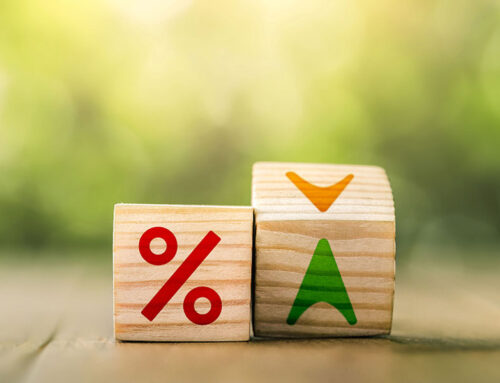I remember using a scratch pad to jot down the various numbers I needed to calculate when I was analyzing real estate deals the hard way back in the day. I laugh when I look back at those first scribblings. I also marvel that the mistakes I made weren’t so big that my career as a real estate investor prematurely ground to a halt. Of course, in those early days, I was so afraid of bungling things up that I tended to rework my numbers over and over again.
Boy, that was stressful. And, thankfully, it’s no longer necessary. You can plug your numbers into a Google spreadsheet or use an online calculator. You can still hand write them, too, if you really want to (though, trust me on this one, I wouldn’t if I were you). But, what exactly are the numbers you’re trying to calculate? And, how can you be certain you’re doing it correctly?
What to Calculate When Analyzing Real Estate Deals
Before I detail what you need to calculate when analyzing a real estate deal, I want to emphasize why it’s important. In order to make a living from real estate investing, you have to be able to realize a potential return from every investment. The returns also have to be large enough, and frequent enough, to justify your efforts and feed your family. Adding an occasional couple thousand dollars to your bank account every year is great if your goal is to invest part-time. But, it won’t add up to a successful career unless you set your sights higher. And, honestly, whether you invest part-time or full-time, the risks to investing in residential property are the same—meaning, you could lose money if you get your numbers wrong. So, let’s make sure you know which numbers matter and how to get them as close to right as possible.
Property Purchase Price
Your total cost to purchase a property will often have the biggest impact on your potential returns. The reason for this is simple. What you spend to acquire the house determines how much money is left over to perform the repairs and still see a profit. Your total acquisition expenses include everything from the interest and fees you paid to get a hard money loan to any back taxes or liens you settled to get a clear title. Of course, the best way to adjust for these and other upfront costs is to buy as low as possible to begin with. If you forget that your total price tag is quite a bit more than the property’s list price, you risk paying too much.
Cost to Renovate
Before even making an offer on a house, it’s crucial that you know how much cash you’ll need to renovate the property in order to increase its value and, hopefully, the selling price. That makes conducting a home inspection non-negotiable and seeking renovation tips for your investment property invaluable. You don’t want to be saddled with a major fixer you aren’t financially prepared to fix, nor do you want to perform pricey upgrades for a demographic that isn’t able to afford the buy. Either scenario can cut into your returns. So, be sure to get a grip on what needs to be done, and how much it will cost you, to avoid watching any potential profit slip through your fingers.
Holding Costs
Deciding, like I have, that the benefits of being a landlord aren’t for you, and that flipping houses is more your speed, doesn’t mean you won’t incur holding costs. It takes anywhere from three to 12 months to turn an investment property around and get it back on the market to resell. And, during that time, you’ll have to pay for utilities, taxes, regular maintenance and property insurance on your real estate investment.
These costs can really add up, especially if your property sits a while before being sold. Should anything happen that delays the renovation or the sale of the house, these expenses could get extended. So, work these possibilities into your budget when running your numbers because, in this business, it’s not uncommon for the unexpected to happen. You just don’t want your funds, or your ROI, to be caught off guard when it does.
After Repair Value (ARV)
Determining the probable value of your investment property after renovations have been completed—its ARV—is what helps you decide how much you can reasonably expect to sell it for. And, calculating this number requires reviewing the sale prices of homes near your property that are of similar size, style, and condition to see what they sold for. Obviously, you want to make sure you’re comparing apples to apples, rather than your two-bedroom fixer-upper to a four-bedroom new build. Otherwise, your calculations, and your returns, will be off.
To make sure your numbers are right on, it’s not a bad idea to enlist the help of a licensed real estate agent, perhaps the one who will be selling your investment property. Since they have access to the Multiple Listing Service and, ideally, also have years of experience checking comps, establishing the ARV should be easy. And, that should make budgeting for your other numbers, and realizing decent returns, easier, too.
Relying on your own math skills to correctly calculate these numbers is now a thing of the past. But, that doesn’t mean there still isn’t room for human error when you put your pencil down and pick your smartphone or tablet up. Setting up an Excel or Google spreadsheet takes a bit of skill, as does learning a real estate investment analysis and valuation software program. And, these tools don’t automatically take into account area comps or local labor and material costs, nor do they necessarily help you estimate your returns. In my book, that doesn’t do a whole lot to instill confidence. But, there is something that can and does.
How to Approach Your Deals With More Certainty
After I’d been investing in real estate for a while, I decided to join the HomeVestors® team as an independently owned and operated franchisee. My primary reason: I’d have access to ValueChek™, HomeVestors®’ proprietary analysis and valuation software. At the time that I joined, there was nothing on the market like it. And, in terms of the program’s ability to calculate the cost of more than 80 repairs based on geographically-specific prices and estimate my potential returns, that’s still true.
As one of my fellow franchisees recently remarked, it’s like having a more experienced partner in your pocket. For new investors coming in, I cannot recommend ValueChek™ enough. It reduces your learning curve so that you don’t have to stress over whether or not you’re calculating the numbers as close to right as possible. And, that makes it more likely you’ll approach every deal with more certainty.
Don’t risk bungling your numbers and your career. Contact HomeVestors® today to see how you can get access to ValueChek™.
Each franchise office is independently owned and operated.
Contact
"*" indicates required fields






